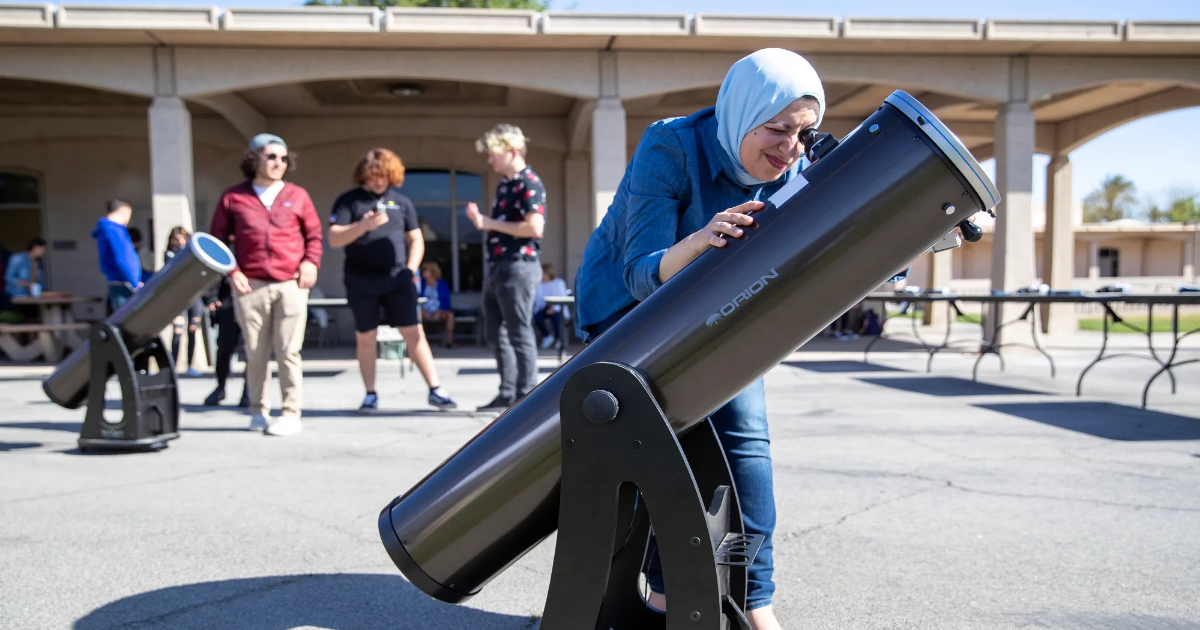A solar eclipse is coming soon, but not as early as Saturday, Aug. 2, as the internet and social media might lead you to believe.
The viral claims of a “once in a century solar eclipse” have spread rapidly on social media platforms, where the frenzy has garnered millions of views on TikTok and X, the Bergen Record reported.
While these claims may lead you to believe the world is going dark on Aug. 2, the only dark that awaits you is when the sun goes down, as neither the U.S. Naval Observatory nor NASA has listed any eclipse for Aug. 2.
However, there is a solar eclipse coming in September. Here’s when the next solar and lunar eclipses are, where they are visible, and a schedule of eclipses in 2026.
When is the next solar eclipse?
On Sept. 21, some lucky people in the Southern Hemisphere will witness a partial solar eclipse, treating viewers to a shining, crescent shape in the sky. While the celestial event will not be visible in North America, it can be viewed in Eastern Australia, Antarctica, New Zealand, and numerous islands in the Pacific, according to Time and Date.
When is the next total solar eclipse?
A partial solar eclipse will be visible in North America about a year from now. On Aug. 12, a total solar eclipse will be visible in Greenland, Iceland, Spain, Russia, and a small area of Portugal, while a partial eclipse will be visible in Europe, Africa, North America, the Atlantic Ocean, the Arctic Ocean, and the Pacific Ocean. Unfortunately, it doesn’t seem that the partial eclipse will be visible in California, according to Time and Date, so people may want to do some traveling for it.
Wait, what is a partial lunar eclipse?
During a partial lunar eclipse, the sun, moon and earth aren’t perfectly lined up, so only a portion of the sun appears to be covered, said NASA. As a result, you’ll see the sun’s crescent shape.
How often does a solar eclipse happen?
There are at least two solar eclipses each year, although it can be any type of solar eclipse, such as a partial or annular solar eclipse, according to Astronomy Magazine. NASA, based on calculations of a 5,000-year period that includes decades to come, said there will be two to three solar eclipses “of all kinds” each year.
When is the next lunar eclipse?
The next total lunar eclipse is on Sept. 7 and will be viewable to people in Europe, Africa, Asia and Australia, according to NASA. The next one visible in the U.S. won’t be until March 3, 2026. It’s a total lunar eclipse, and it’ll be visible in California, according to Time and Date.
List of the next lunar eclipse, solar eclipse dates in 2026
Here’s a list of upcoming solar and lunar eclipses, according to the U.S. Naval Observatory, NASA and Time and Date.
- Feb. 17: Annular solar eclipse visible in Antarctica, and partial solar eclipse visible in Africa, South America, and across the Pacific, Atlantic, and Indian oceans.
- March 3: Total lunar eclipse visible in Asia, Australia, the Pacific Islands, and the Americas.
- Aug. 12: Total solar eclipse in Greenland, Iceland, Spain, and Russia, and a small area of Portugal, and a partial eclipse visible in Europe, Africa, North America, and across several oceans.
- Aug. 28: Partial lunar eclipse visible in North and South America and parts of Europe and Africa.
Can I use sunglasses to look at an eclipse?
Be sure to use proper eye protection like eclipse glasses when looking directly at an eclipse — and no matter how dark your sunglasses are, those aren’t enough — said NASA. Don’t look at the sun through a camera lens, telescope, binoculars, or any other optical device while wearing eclipse glasses, as the concentrated solar rays will burn through the filter and cause serious eye injury, according to NASA.
Desert Sun intern Tallulah Rector contributed to this story.
Paris Barraza is a trending reporter covering California news at The Desert Sun. Reach her at [email protected].
